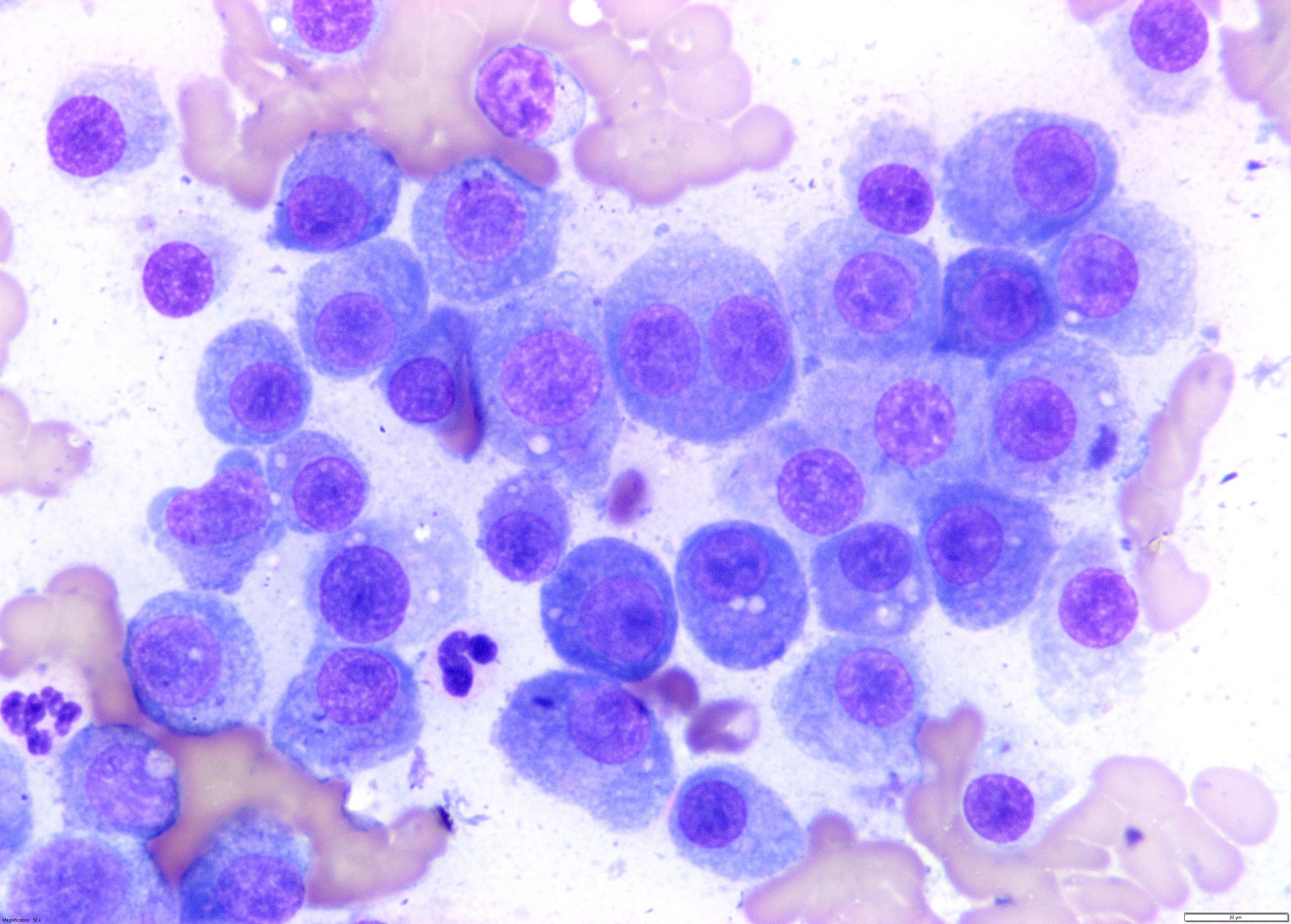Species: Any
Specimen: Bone marrow, Peripheral blood (for concurrent CBC)
Container: EDTA bone marrow, direct smears of bone marrow, EDTA blood
Collection protocol: Collect using standard techniques with appropriate sedation/anaesthesia/analgesia. The iliac crest and humeral head are preferred sites for dogs; iliac crest and proximal femur for large cats; proximal femur for smaller cats and neonates; and a sternal vertebra in horses and ruminants. It is always recommended to obtain a needle aspiration and core biopsy when sampling. Make a few direct smears of the aspirated material and place the remainder in an EDTA tube (shake out excess EDTA). Bone marrow aspirates/biopsies must be interpreted along with a concurrent CBC so make sure to send in EDTA blood as well. The CBC is included in the bone marrow cytology fee. Also, a thorough clinical history is essential.
Special handling/shipping requirements: Do not ship with formalin (or wrap and bag separately) as the formalin fumes prevent cellular uptake of differential stains rendering the slides non-diagnostic.
General information about the disease: See general cytology section
General information about when this test is indicated: Required to diagnose causes of unexplained anaemias, cytopenias, presence of abnormal cells within the peripheral blood e.g. leukemias, and unusual conditions affecting platelets.
When a bone marrow aspirate is sent to a laboratory send an EDTA blood sample for a concurrent CBC even if there are prior haematology results. This is because the best interpretation possible can be made only when both are carried at the same time. The blood picture is very dynamic and may vary from day to day.
Comparison with other related tests: When sampling bone marrow, it is recommended to obtain both an aspirate for cytology as well as a biopsy for histopathology.

